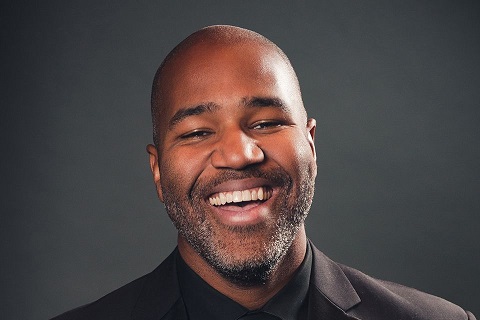 United States Soundbox, Principia: David Chernyavsky (curator and violin), Katie Kadarauch (curator and viola), Scott Pingel (curator and bass), members of San Francisco Symphony / Daniel Bartholomew-Poyser (conductor), Soundbox at Davies Symphony Hall, San Francisco, 6.12.2019. (HS)
United States Soundbox, Principia: David Chernyavsky (curator and violin), Katie Kadarauch (curator and viola), Scott Pingel (curator and bass), members of San Francisco Symphony / Daniel Bartholomew-Poyser (conductor), Soundbox at Davies Symphony Hall, San Francisco, 6.12.2019. (HS)

Act I: Ornamental improvisation
Act II: Variations in improvisation
Act III: Jazz improvisation
Aside from orchestral subscription concerts, a Great Performers series, and a variety of chamber music offerings, San Francisco Symphony has gained an enthusiastic following for Soundbox, a three-times-a-year series ‘curated’ by musicians to explore less-obvious connections. In its sixth season, events happen in a vast rehearsal space converted for performance, outfitted with couches and high tables where listeners can sip drinks and hear state-of-the-art electronic amplification by Meyer Sound.
The casual surroundings and adventurous programming draw a wider age range than other concerts, and if the folks surrounding me Friday evening are an indication, many of them are SFS regulars looking for something a bit different.
They got exactly that in a 2 and a half hours of short-to-medium-length pieces demonstrating how musicians — from composers to performers — can make things up as they go along. David Chernyavsky, a member of the orchestra’s second violin section, put together the opening section focused on ornamentation, which touched on Vivaldi and Klezmer. Assistant principal violist Katie Kadarauch was responsible for a second act with pieces that twist the very idea of musical forms. The chief curator was Scott Pingel, the orchestra’s principal bass, who wrapped up the concert leading a sextet playing the jazz of Louis Armstrong to Herbie Hancock.
The evening could have sunk into a morass of lessons, but the through-line thankfully sought out fun bits. Canadian conductor Daniel Bartholomew-Poyser brimmed with enthusiasm in deft remarks. He encouraged audience participation in several works, including a 1968 example of chance music, Frederic Rzewski’s Les Moutons de Panurge, which concluded with open improvisation encouraged to be as wild as possible.
From a purely musical standpoint the zenith was Kadarauch’s remarkable traversal of the Pizzicato movement from Garth Knox’s Viola Spaces. The 2007 piece for unaccompanied viola included an entire portion swiping the bow horizontally against the strings to create a unique sound, and elsewhere employed plucking borrowed from banjo picking. The result was a mesmerizing example of how to draw a range of sounds from a familiar instrument, without losing the essence of ideas that communicate and dazzle.
The opening section, on ornamentation, began by deconstructing the foundation of the Allegro from Vivaldi’s Sinfonia in G major, showing how a composer could establish a musical form — and then create a melody over it, essentially improvising on paper. Chernyavsky, who was born in Russia, led a Klezmer quartet in several folk and Yiddish songs, and Bartholomew-Poyser followed by leading the chamber-size orchestra in a headlong hurtle through the molto vivace from Ligeti’s Concert Românesc, which borrowed melodies, harmonies and rhythms directly from a Klezmer Freluch.
Pingel’s jazz set brought principal trumpet Mark Inouye and percussionist Jacob Nissly together with local jazz artists to play arrangements of jazz classics ‘Beau Coup Jack’ (Louis Armstrong), ‘Caravan’ (co-written by Duke Ellington), ‘Footprints’ (Wayne Shorter), and ‘Watermelon Man’ (Herbie Hancock). The jazz feel may have been tame and polite, but it still swung gently. The improvisations across the board were impressively valid.
With the exception of Mouton — in which Nissly’s work carrying the melody on vibes amped up the intensity — and Kadarauch’s flair in her unaccompanied viola piece, that sense of politeness, or reserve, kept much of the other music from soaring as high as it might have done. Even the Klezmer pieces lacked a sharp rhythmic bite. Still, the audience, perhaps lubricated by gin and rum drinks, lapped up a chance to hear music through a different lens than usual.
Harvey Steiman